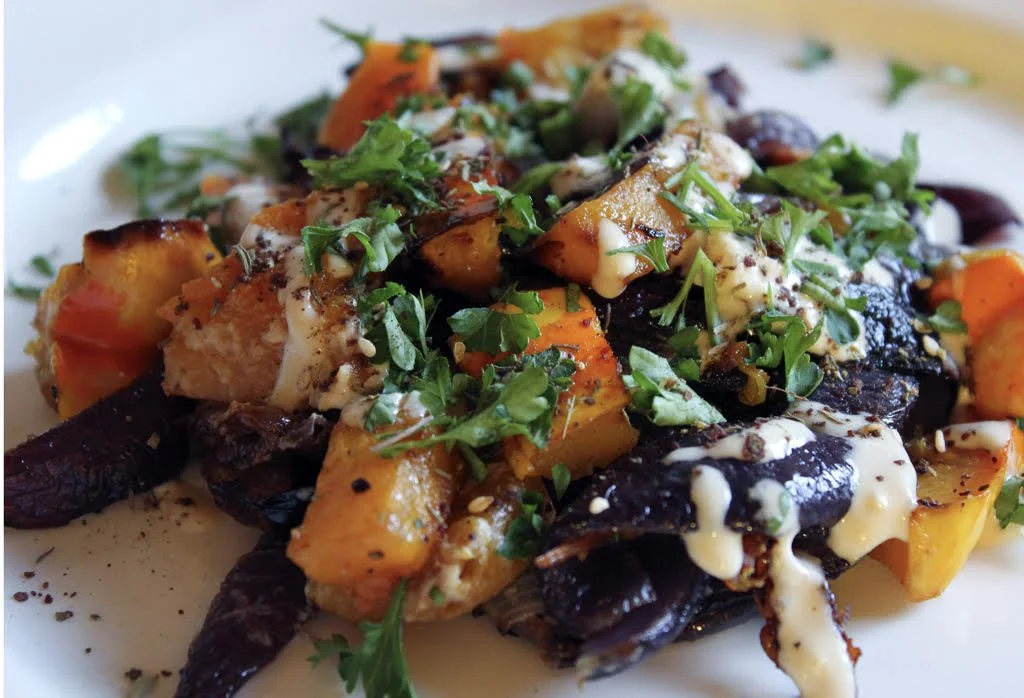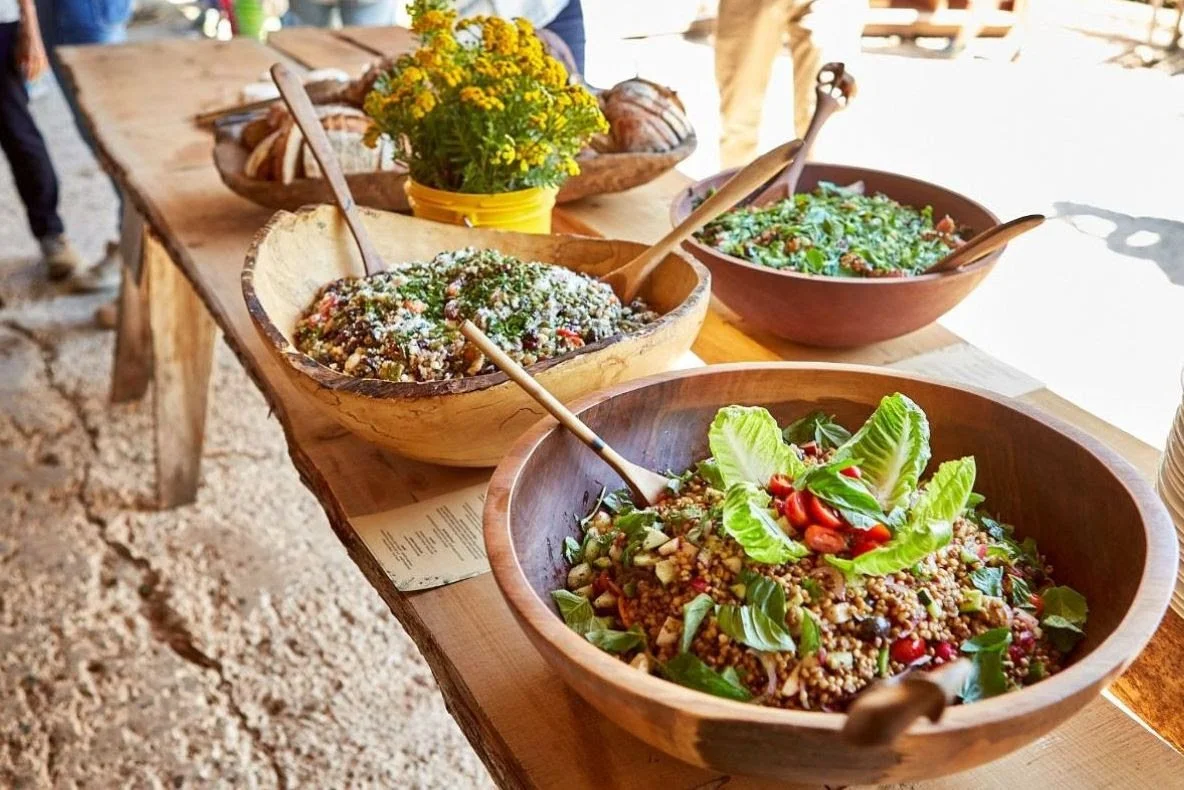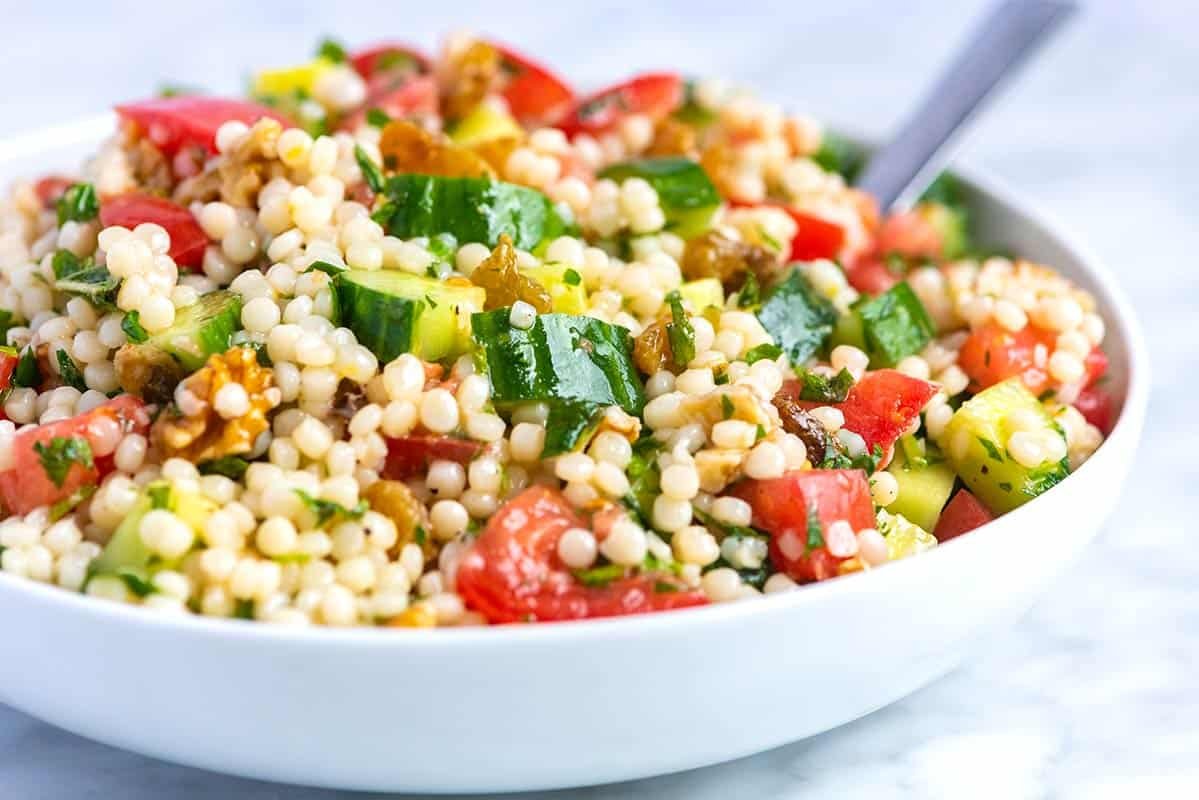In the Kitchen:
As the leaves turn golden and the air becomes crisp, it’s time to embrace the hearty and rich flavors of fall. This recipe for Shredded Fall Greens with Sherry Thyme Vinaigrette & Hazelnuts is the perfect way to celebrate the season. The dish is both vibrant and nourishing, offering a delicious balance of earthy, nutty, and tangy flavors. It’s not only vegan but also packed with nutrients, making it a wonderful addition to your autumn table.
Ingredients:
For the Salad:
2 cups shredded kale (Tuscan or curly)
2 cups shredded Brussels sprouts
1 cup radicchio, thinly sliced
1 small apple, thinly sliced (optional for a hint of sweetness)
1/3 cup toasted hazelnuts, roughly chopped
1/4 cup dried cranberries (optional for added color and sweetness)
For the Sherry Thyme Vinaigrette:
1/4 cup extra virgin olive oil
2 tbsp sherry vinegar
1 tsp Dijon mustard
1 tbsp fresh thyme leaves (or 1 tsp dried thyme)
1 small shallot, finely minced
1 clove garlic, finely minced
Salt and black pepper to taste
1 tsp maple syrup (optional for a touch of sweetness)
Instructions:
1. Prepare the Greens: Start by prepping your fall greens. Rinse the kale, Brussels sprouts, and radicchio thoroughly. Pat dry with a towel. Using a sharp knife or food processor, shred the kale and Brussels sprouts into thin strips. Thinly slice the radicchio and apple (if using). Toss all the greens together in a large mixing bowl to create a colorful base for your salad.
2. Toast the Hazelnuts: Toast the hazelnuts to enhance their natural flavor and crunch. Heat a small, dry skillet over medium heat. Add the hazelnuts and toast them for about 5 minutes, stirring frequently to avoid burning. Once they’re fragrant and lightly browned, remove from heat, let cool, and roughly chop them. Set aside.
3. Make the Vinaigrette: In a small bowl or jar, whisk together the olive oil, sherry vinegar, Dijon mustard, thyme leaves, minced shallot, and garlic. Season with salt and pepper to taste. If you prefer a slightly sweeter dressing, add the optional maple syrup. Adjust the seasoning to your liking.
4. Dress the Salad: Pour the sherry thyme vinaigrette over the shredded greens. Toss well to ensure all the leaves are evenly coated. The vinaigrette should help soften the kale and Brussels sprouts slightly, making them more tender without losing their fresh crunch.
5. Add the Toppings: Top the dressed greens with the toasted hazelnuts, dried cranberries, and apple slices for extra texture and flavor. The hazelnuts add a delightful nuttiness that pairs perfectly with the earthy greens, while the cranberries and apples provide a touch of sweetness and tartness.
6. Serve: Serve immediately for a crisp and fresh salad, or let it sit for 10–15 minutes to allow the flavors to meld and the greens to soften further. This salad makes a great side dish for a cozy fall meal or can be enjoyed as a light, satisfying lunch.
Pro Tips:
Make it a meal: Add some protein like roasted chickpeas or grilled tempeh to make this salad a more substantial main course.
Storage: If you’re making this ahead, keep the dressing and greens separate until just before serving to maintain their crispness.
Nut alternative: If you’re allergic to hazelnuts, swap them out for toasted almonds or walnuts for a similar crunchy texture.
Why You’ll Love This Recipe
This salad is the epitome of autumn in a bowl. The combination of hardy greens with the sweet and nutty vinaigrette creates a dish that is packed with nutrients and bursting with flavor. The kale and Brussels sprouts are rich in vitamins A, C, and K, while the hazelnuts provide healthy fats and protein. The sherry thyme vinaigrette ties it all together with its herbaceous, tangy, and slightly sweet notes.
Whether you’re hosting a fall gathering or just craving a healthy and delicious meal, this Shredded Fall Greens with Sherry Thyme Vinaigrette & Hazelnuts is sure to be a crowd-pleaser!
















